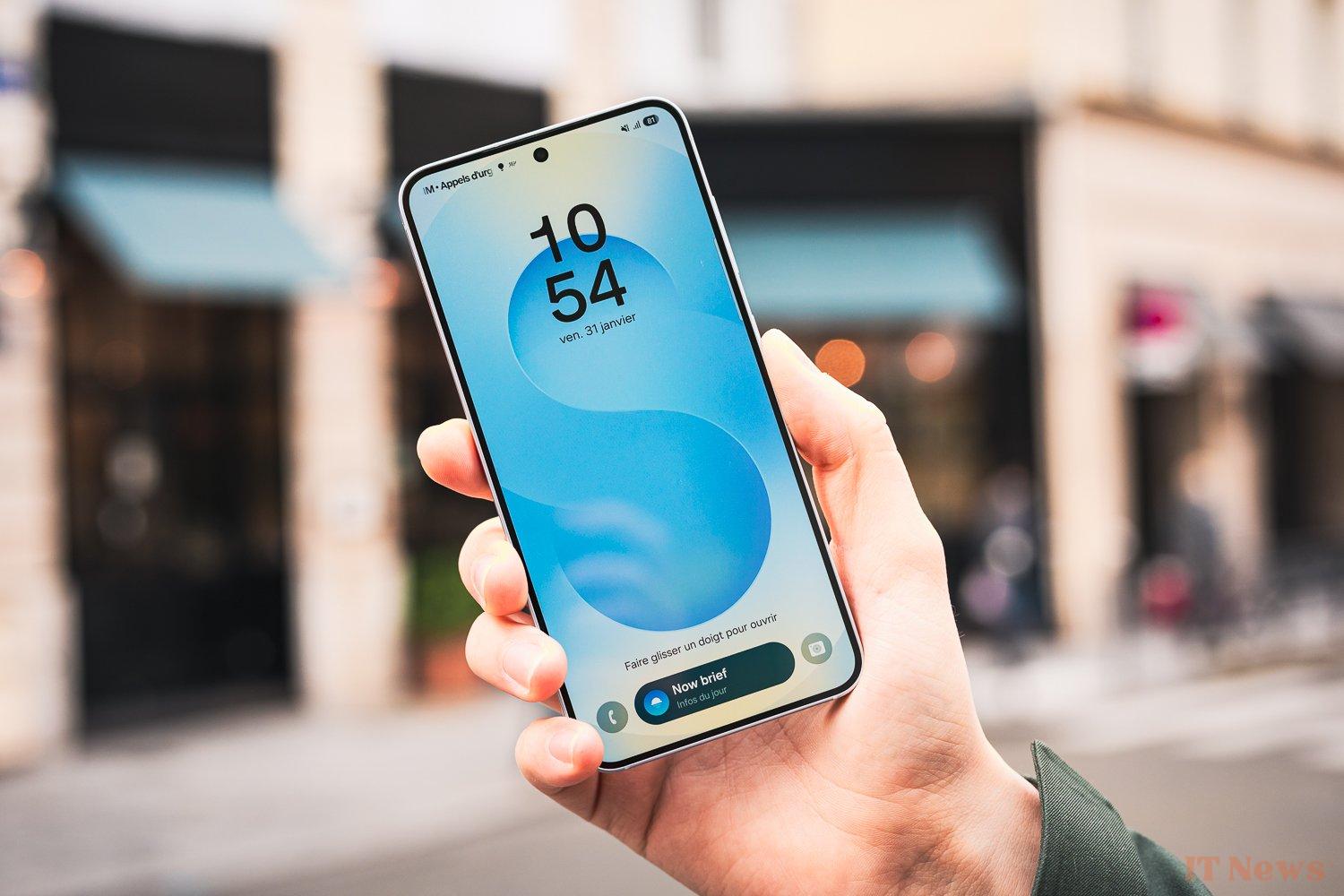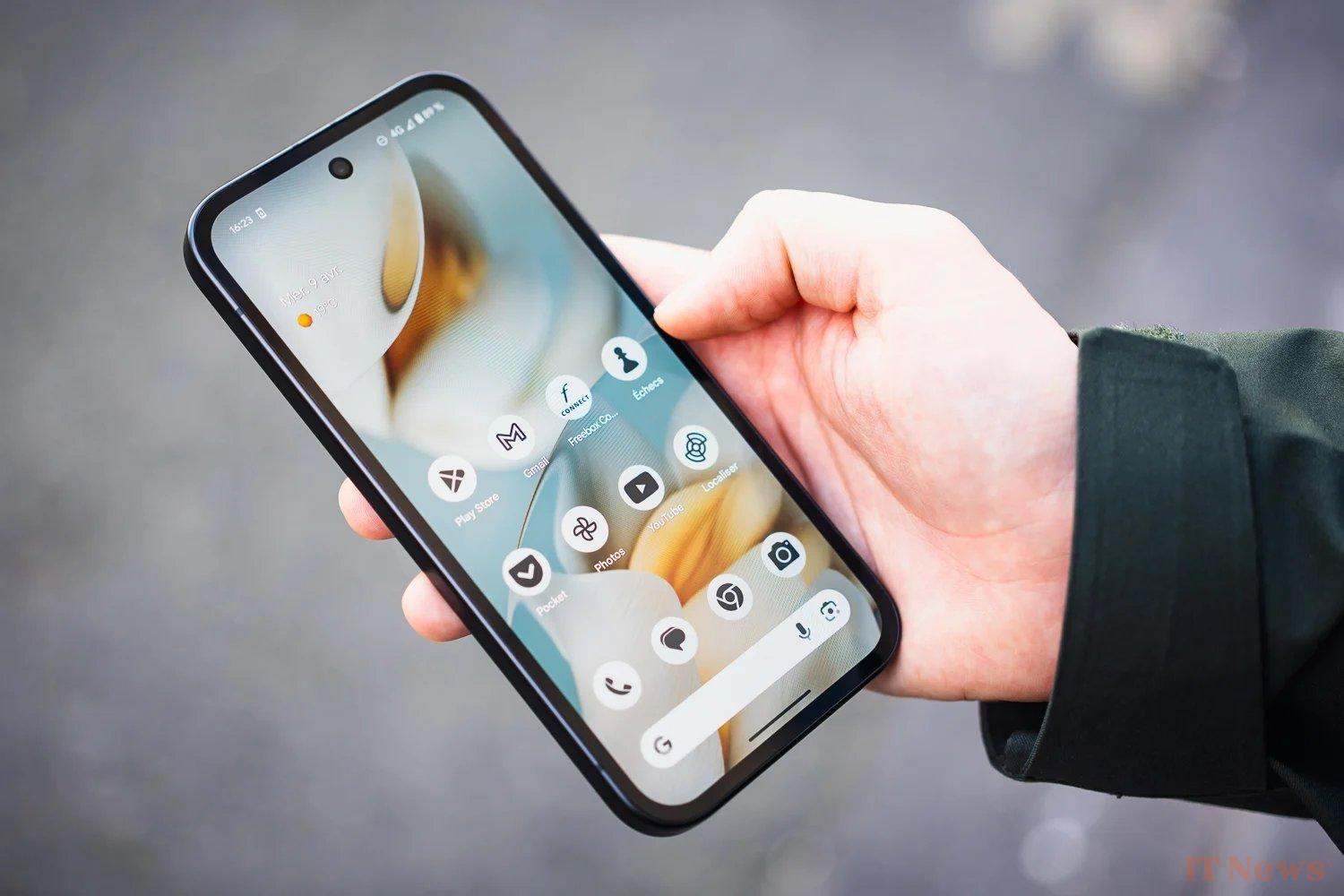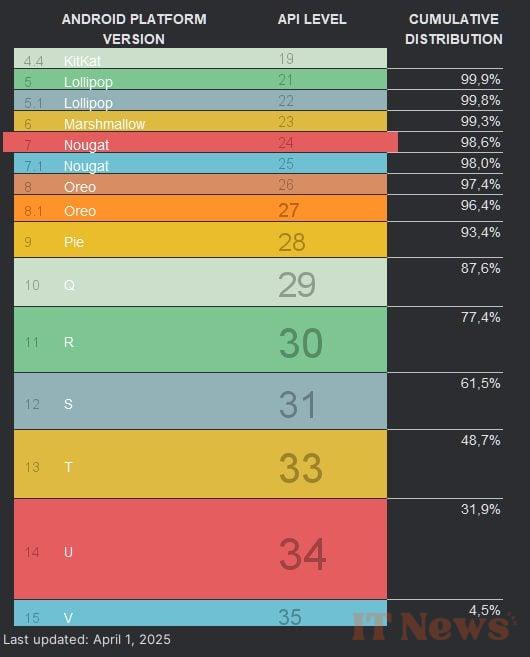The adoption rate of new versions of Android is very specific. While on iOS, for example, iPhone users quickly exceed 80% adoption of the new version when it is released, Android users are slower.
Android and iOS, two very different worlds
Generally, the new version peaks at a little above 10 to 15% adoption after a year of availability. Several reasons explain this: a very large smartphone market, some of which can no longer benefit from the latest versions but remain usable, the fact that Google does not control the entire production chain like Apple does for its iPhones, etc. We won't go into details in this article.
So you've understood, apart from a few technophiles, the new versions of Android don't create a stir. But this year, Android 15 seems to be suffering from a particularly violent lack of interest.
Android 15 at rock bottom
A simple tool lets you know how widely adopted a version of Android is or is not. Android Studio, which allows developers to design applications for the mobile OS, communicates on the adoption rate to help them choose the ideal version for their creations.
As you can see in the visual below, whose data is very recent since it dates from the beginning of April 2025, Android 15 has only been adopted by 4.5% of users.
Android 14, on the other hand, peaks at 27.4% and is by far the most adopted version. Android 13 and Android 11, the other two most popular versions, stand at 16.8% and 15.9% respectively.
4.5% is very low, even for Android. As a reminder, Android 16 is expected to arrive as early as May 2025. This therefore raises real questions about the long-term viability of the model, since the more users spread out over numerous versions, the more they have to be kept up to date, pay for additional development time, etc.
Samsung is partly responsible
The culprit is clear: One UI 7, the new version of Samsung's interface, is very late. And when the industry's number 1 phone vendor is so behind, the OS adoption rate inevitably takes a hit.
Several factors explain this delay. From the start, Samsung has taken the time to thoroughly rework its interface. The result is a resounding success: anyone who has held a Galaxy S25 in their hands will tell you, the interface is fluid, modern, and pleasant.
However, as soon as you move beyond the high-end smartphones recently released by the Korean company, things get more complicated. Already the Galaxy A56 and its ilk, geared toward the entry-level and mid-range, don't benefit from such a polished experience. We clearly saw this during our tests. This means that even on deployed versions of the interface, the development time to make everything stable and pleasant was probably not enough.
So for older smartphones, Samsung is inevitably taking a hit. The vast majority of Samsung's fleet that would be eligible for an upgrade to One UI 7 is still running One UI 6.
Furthermore, a bug has recently slowed down development time. There is still talk of a release for the Galaxy S21, S22, and S23 in June 2025, after the release of Android 16. So it's a bit of a disaster, and there's no need to look much further to explain the low adoption rate of Android 15.





0 Comments